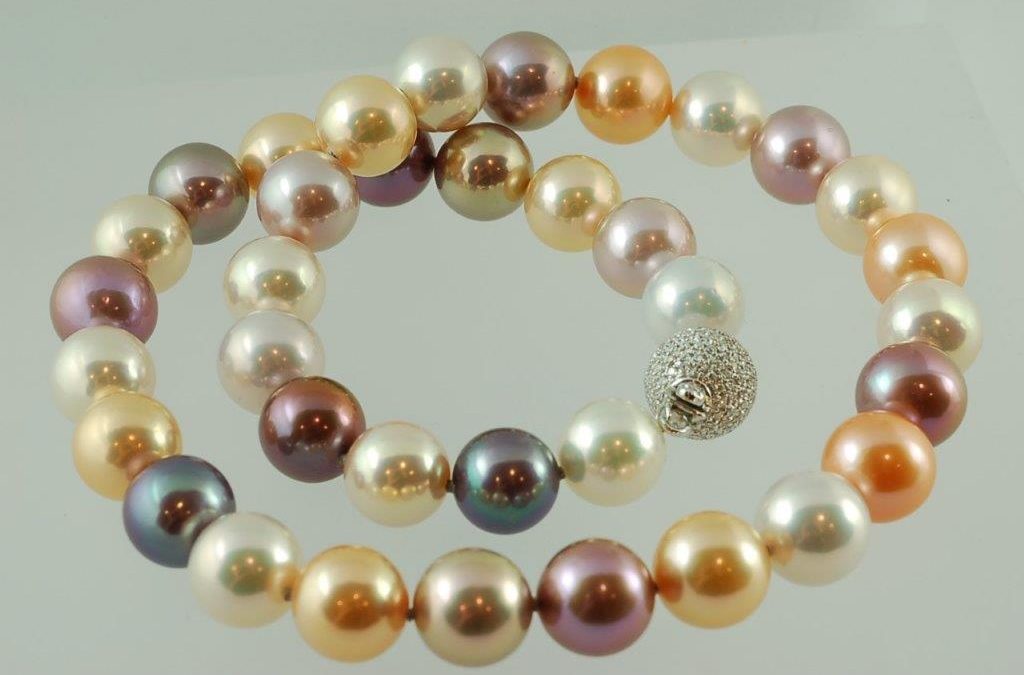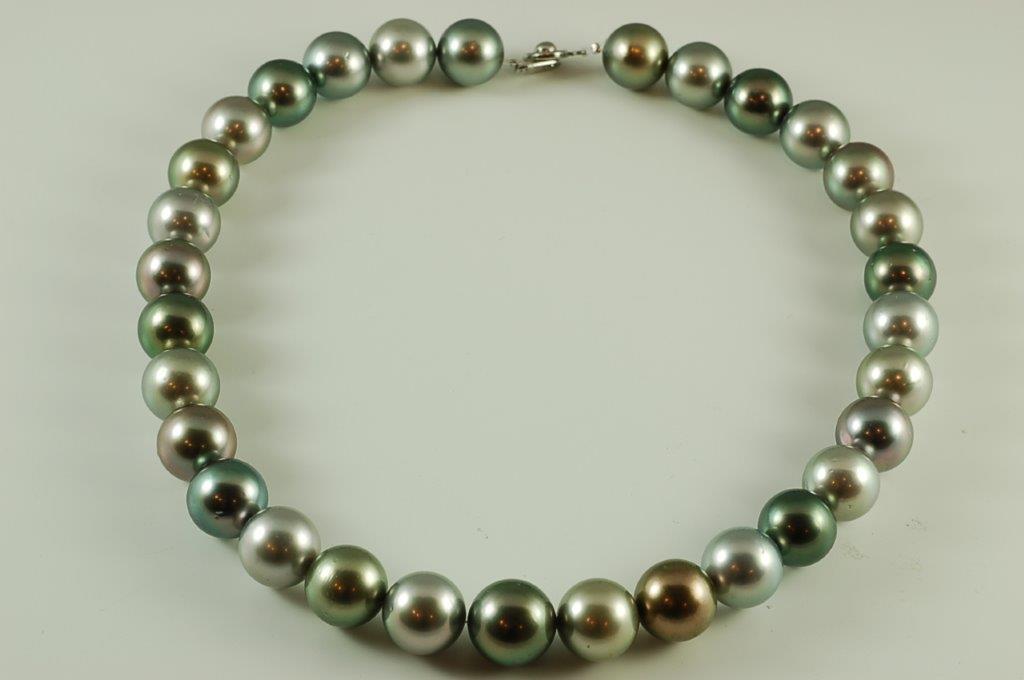Pearls Galore!
There are so many types of glorious pearls to choose from. There are many ways to rate pearls as well. Many times, pearls are rated on the following features:
COLOR:
First, you can look for Color: for genuine pearls or Japanese Akoya pearls, we are looking for a rose overtone, for other pearls, it could be black or golden tones.
LUSTER:
Second, you can judge Luster: here you are looking for the sheen or brilliancy of the pearl; often times there is talk of a hot spot of light, and you would want that more in focus rather than blurry when you look directly into the spot
BLEMISH:
Third, you can identify Blemish: when looking at pearls, there will always be blemishes on the surface, how many, how big, and how noticeable makes what we call imperfections. The fewer imperfections, the higher the score on the blemish scale, and the greater the value the pearl will command. You can have blemishes on pearls, and when they are worn, they are basically imperceptible.
SIZE:
Finally, one can measure size when stringing pearls together, typically based on their size. While not always the case, larger diameter pearls are exceedingly rare. Baroque pearls are the name given to pearls that are not perfectly round.
Pearls come in a variety of different kinds, with a wide range to choose from. We call it Pearls Galore! There is such a vast array of pearls in the world, including both cultured and natural pearls. These are not costume jewelry, but rather authentic pearls.
Japanese Akoya Pearls:
We tend to deal with these pearls the most commonly. Genuine pearls, not cultured or cultivated, originate in the Sea of Japan.
Freshwater Pearls:
Pearls develop inside of an oyster over a period of two to four years, resulting in cultured or cultivated pearls. The process of producing the majority of cultured pearls takes place in lakes, rivers, and bodies of freshwater within China.
White South Sea Pearls:
White South Sea Pearls often grow into exceptionally large diameters. People prize these glorious pearls for their color and luster. Farmers grow them in the very deep-sea waters off the coast of Australia, and they find large pearls to be very rare.
Golden South Sea Pearls:
These prized pearls can grow very large and people prize them for their deep and dark tones. They usually find them in deep-sea waters off the coast of the Philippines.
Black Tahitian Pearls:
Tahitian pearls boast a vast variety of colors because they grow in a rainbow spectrum and range from iridescent green to peacock to stunning black. Although Tahitian pearls grow in many places, only those cultivated in French Polynesia can be referred to as Tahitian pearls.
Keshi Pearls:
There is a lot to learn about Keshi pearls, and to speak of them without their species of mollusks or geographic location makes the term Keshi nondescript. You can learn all you need to know about Keshi pearls, here, on Wikipedia. In short terms, Keshi pearls are the source of the luster of other pearls, nacre-pronounced (Nake er), which is also known as mother of pearl.
Nacre gives the pearls their sheen or luster. Keshi pearls do not have a nucleus. They are fragments that get into oysters and the nacre grows around them, producing the Keshi pearls.
In conclusion, there is a large volume of information to know about pearls and we value the wisdom of the ages and the market that determines value when discussing pearls. The things we want you to remember is:
First, that Jewelry Should Be Art!
and second, that jewelry should bring you joy when you wear it.
Pearls will definitely bring you joy. We say, let there be Pearls Galore!


